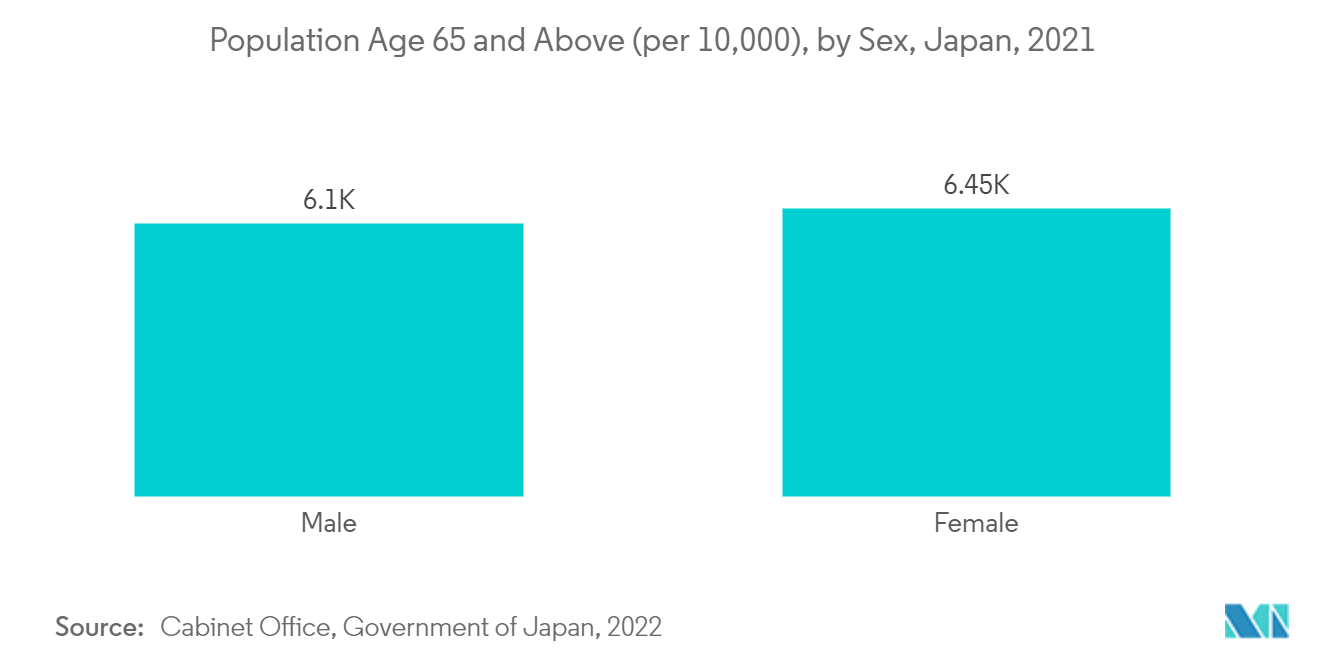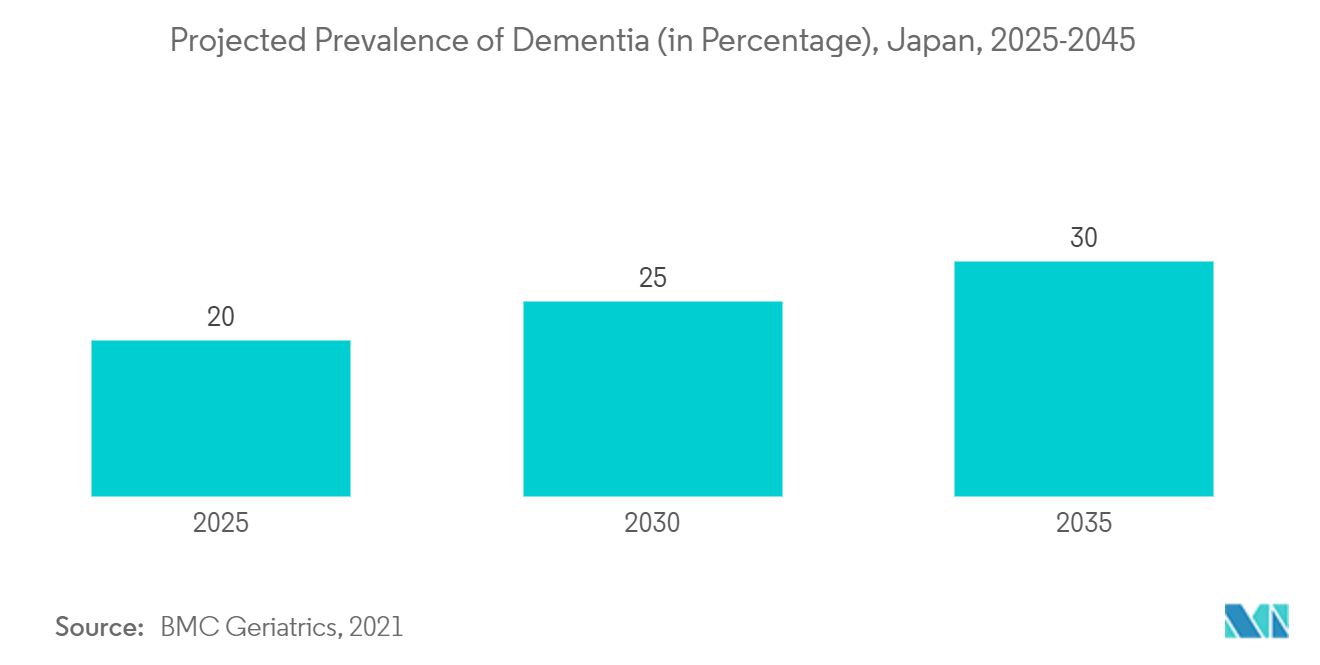Market Trends of Japan Neurology Devices Industry
This section covers the major market trends shaping the Japan Neurology Devices Market according to our research experts:
Cerebrospinal Fluid Management Device is Expected to Hold Significant Share Over the Forecast Period
Cerebrospinal Fluid Management (CSF) devices play a major role in the treatment of traumatic brain injury (TBI). Shunts are devices used in the CSF procedure that ensure that any cerebrospinal fluid accumulated near the brain gets drained out. The major factors contributing to the growth of the market for cerebrospinal fluid (CSF) management devices include the increasing prevalence of neurological disorders and the increasing geriatric population.
The growing burden of neurological diseases in the country is expected to propel the growth of the market over the forecast period. For instance, according to the study published in the Journal of Movement Disorders in October 2021, the annual prevalence of Parkinson's disease (PD) in Japan is reported as 50-80 per 100,000, and it is increasing rapidly because aging is a major risk factor for PD. Thus, a significant burden of Parkinson's disease is expected to increase the demand for its treatment, thereby boosting the market for CSF devices over the forecast period.
According to World Bank data updated in July 2022, Japan has the highest proportion of the elderly population in the world. In addition, as per the World Population Prospectus 2022 published by the United Nations, in 2021, Japan and a few other countries had the highest life expectancies at birth (about 85 years) and age 65 among the countries and areas with at least half a million people. Thus, a growing geriatric population that is more susceptible to neurological diseases is expected to drive the demand for CSF devices.
Thus, all the aforementioned factors, such as the growing geriatric population, are expected to boost segment growth over the forecast period.

Deep Brain Stimulation Devices is Expected to Hold Significant Share Over the Forecast Period
Deep brain stimulation (DBS), a neurosurgical procedure, is used to treat movement disorders like Parkinson's disease, essential tremor, and dystonia, as well as other conditions like obsessive-compulsive disorder (OCD) and epilepsy by implanting a medical device called a neurostimulator that sends electrical impulses to specific targets in the brain (the brain nucleus).
The segment is driven by the rising prevalence of neurological diseases and rising research activities on deep brain stimulation devices. For instance, according to the study published in Neuroengineering and Rehabilitation in November 2022, Neodymium (NdFeB) magnets, which are small and powerful, are used in transcranial static magnetic field stimulation (tSMS) to temporarily inhibit brain activity below the magnet. Due to its competitive benefits, including safety, simplicity, and low cost, it is a promising non-invasive brain stimulation technique. The tSMS system has the capacity to control brain activity and create an effective magnetic field in deep tissues. For non-invasive deep brain stimulation, it is applicable. Thus, technological advancement in the DBS is expected to propel the growth of the segment.
Thus, all the aforementioned factors are expected to boost segment growth over the forecast period.


